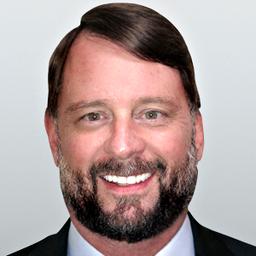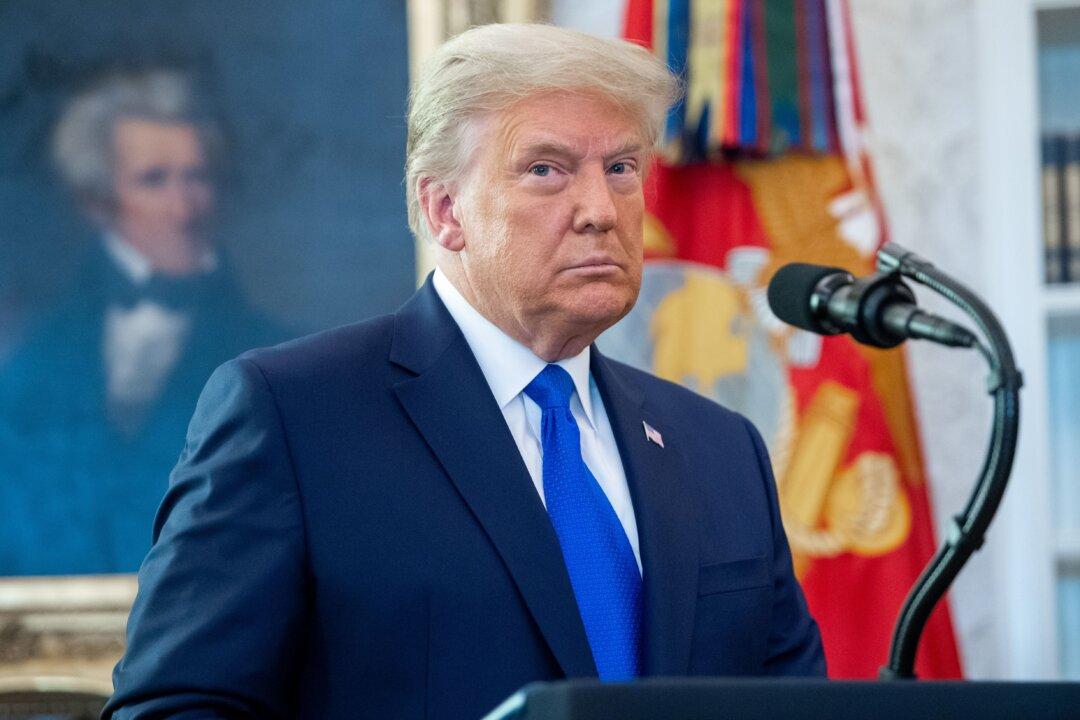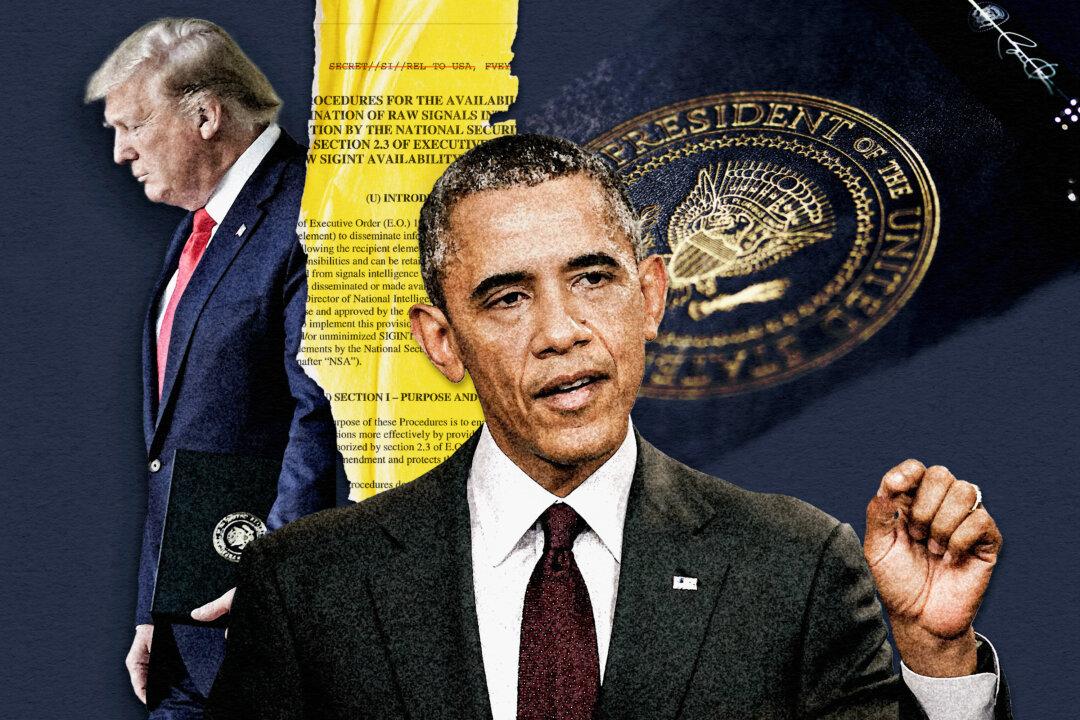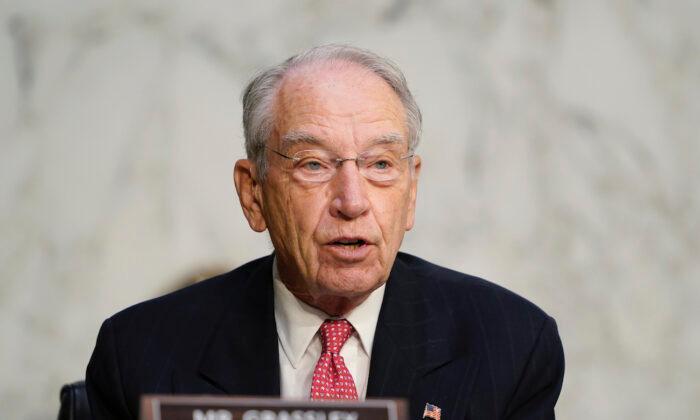The Telegraph has published two separate articles detailing their version of when the heads of UK intelligence were briefed about a dossier of claims about President Donald Trump’s alleged ties to Russia.
“The heads of MI5 and MI6 and one of [Prime Minister Theresa] May’s most trusted security advisers were told about former British intelligence officer Christopher Steele’s memos on the Trump campaign in the weeks after his November 2016 election victory.”
The Telegraph article goes to significant lengths to make two separate points: that UK intelligence heads were briefed on Steele’s information only after the 2016 presidential election had concluded, and that May was never directly informed of the dossier’s existence. Interestingly, the article points out that the prime minister “may have known Mr. Steele” from the UK’s inquiry into the poisoning death of Russian defector Alexander Litvinenko, when May was home secretary.
The JIC’s website specifically notes that “members of the Committee are to bring to the attention of their ministers and departments, as appropriate, assessments that appear to require operational, planning or policy action.”
“Together, they looked at what Mr. Steele had brought—more than a dozen memos originally sent to his client, Fusion GPS, spelling out in detail the alleged Trump-Kremlin links.
“For hours, the pair worked through the information—now collectively known as the ‘Steele dossier’—line by line.
“Farr would ask questions, Mr. Steele would spell out what he knew.”
According to The Telegraph article, by the end of his first meeting with Steele, Farr had decided that the allegations within the Steele dossier “had to go up the chain of command.”
“Within days, according to well-placed sources, the allegations were shared with the most senior intelligence figures in the country,” The Telegraph reported.
“It is understood that Alex Younger, the MI6 chief, and Andrew Parker, the MI5 director general, were informed of the dossier.”
Questions About the Telegraph Article
The reference to “the addition of two new memos” is of material note. The known Steele dossier contains 17 individual memos—including one final memo written in December 2016 for late U.S. Sen. John McCain. However, no memos were written in November 2016. In UK court documents, Steele himself stated that he produced no memos during November:“The Defendants produced sixteen such memoranda. These will be referred to for convenience as “the pre-election memoranda,” having been prepared before the US Presidential election. The last one was produced in the latter part of October 2016. None were produced in November 2016. ...
“The Defendants continued to receive unsolicited intelligence on the matters covered by the pre-election memoranda after the US Presidential election and the conclusion of the assignment for Fusion.
“After receiving some such intelligence the second Defendant prepared the confidential December memorandum, referred to at paragraph 8.1, on his own initiative on or around 13 December 2016.”
Although there were no known memos created in November, Steele did produce three separate memos in October 2016—on Oct. 12, 18, and 19.
Timing of Steele’s Meeting With Farr
The Telegraph also went to great lengths in its articles to make the point that the meeting between Steele and Farr occurred post-election. It’s unclear, however, whether that is truly the case.Notably, on Oct. 11, 2016, Steele met with Kathleen Kavalec, then-deputy assistant secretary of state for European and Eurasian affairs, just 10 days prior to the FBI obtaining a FISA warrant on Trump campaign adviser Carter Page on Oct. 21, 2016.
Also present at this meeting was Tatyana Duran, who was referenced as being with Steele’s firm Orbis Security. The meeting was likely brokered by Jonathan Winer, a former deputy assistant secretary of state for international law enforcement and former special envoy for Libya, whom Steele had known since at least 2010.
Steele Met With Other UK Officials Before Election
Steele also held meetings with at least two other UK officials, specifically former MI6 head Richard Dearlove, who is also Steele’s former boss, and Andrew Wood, the former British ambassador to Russia.This meeting with Dearlove was almost certainly prior to the election and may have even taken place before Steele’s briefing to an FBI team in Rome in late September 2016. Dearlove later stated that he didn’t know whether Steele had approached the FBI at the time of their meeting.
Steele also had a pre-election meeting with Wood, at which the dossier was specifically discussed. Steele and Wood would meet again in mid-November 2016, leading to Wood notifying McCain of the dossier’s existence.
UK Gathering Intelligence on Trump Campaign
Luke Harding, a journalist for The Guardian, had previously reported on the early involvement of UK Intelligence, noting that Britain’s Government Communications Headquarters (GCHQ) was engaged in collecting information and transmitting it to the United States beginning in late 2015:“In late 2015, the British eavesdropping agency GCHQ was carrying out standard ‘collection’ against Moscow targets. These were known Kremlin operatives already on the grid. Nothing unusual here—except that the Russians were talking to people associated with Trump. The precise nature of these exchanges has not been made public, but according to sources in the US and the UK, they formed a suspicious pattern. They continued through the first half of 2016. The intelligence was handed to the US as part of a routine sharing of information.”
“That summer, GCHQ’s then head, Robert Hannigan, flew to the US to personally brief CIA chief John Brennan. The matter was deemed so important that it was handled at ‘director level,’ face-to-face between the two agency chiefs.”
“His sudden resignation—he informed staff just hours before making this decision public—prompted speculation that it might be related to British concerns over shared intelligence with the US in the wake of Donald Trump becoming president.”
“Last April [2016], the CIA director was shown intelligence that worried him. It was—allegedly—a tape recording of a conversation about money from the Kremlin going into the US presidential campaign.
“It was passed to the US by an intelligence agency of one of the Baltic States. The CIA cannot act domestically against American citizens so a joint counter-intelligence taskforce was created.”
UK Reaction to Trump Declassification Order
On Sept. 17, 2018, Trump issued an order for the immediate declassification of three series of documents related to the Russia investigation and the spying on his presidential campaign.The first set of documents related to the FISA warrant application to spy on Trump campaign adviser Carter Page. The second set of documents related to a series of FBI interviews with former Associate Deputy Attorney General Bruce Ohr. The third set of documents encompassed all FBI reports of interviews prepared in connection with the Page FISA applications.
In addition to issuing the declassification order, Trump directed the Department of Justice and the FBI to publicly release all text messages relating to the Russia investigation from former FBI Director James Comey, former Deputy FBI Director Andrew McCabe, former lead FBI agent on the Russia investigation Peter Strzok, former FBI lawyer Lisa Page, and Ohr.
“Well, we’re moving along, we’re working along. We’re also dealing with foreign countries that do have a problem. I must tell you. I got called today from two very good allies saying, ‘Please, can we talk.’ So, it’s not as simple as all that. And we do have to respect their wishes. But it will all come out.”
Any information subject to declassification that pertains to foreign intelligence—or to the allies themselves—would almost certainly result in high-level discussions. In this particular case, it would appear these discussions were of such concern that they resulted in phone calls from two allies at levels high enough to reach Trump directly.
These phone calls were telling, and likely came from the UK and Australia, confirming their involvement in the events leading to the establishment of the FBI’s counterintelligence investigation. Exactly what details were discussed during the phone calls remains unknown.
“I met with the DOJ concerning the declassification of various UNREDACTED documents. They agreed to release them but stated that so doing may have a perceived negative impact on the Russia probe. Also, key Allies’ called to ask not to release. Therefore, the Inspector General.....
“….has been asked to review these documents on an expedited basis. I believe he will move quickly on this (and hopefully other things which he is looking at). In the end I can always declassify if it proves necessary. Speed is very important to me – and everyone!”
It remains unclear whether the president is referring to investigators such as DOJ Inspector General Michael Horowitz, with his “whenever they need it” reference.
Meanwhile, the Telegraph articles appear to be an attempt on the part of UK intelligence agencies to get in front of the pending declassification of documents by Trump. But the story presented is an incomplete one at best.







